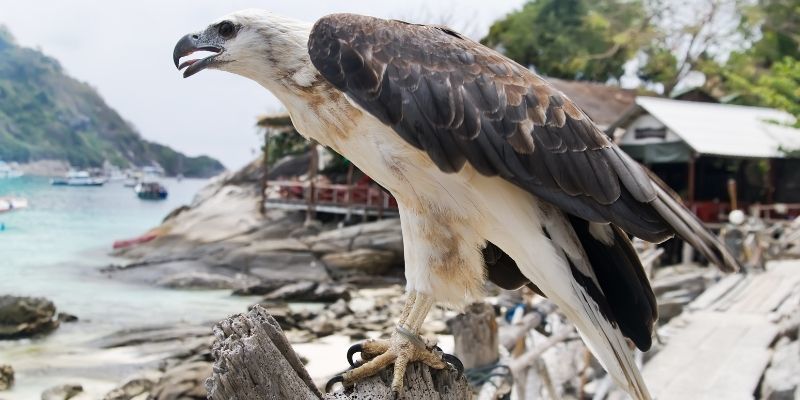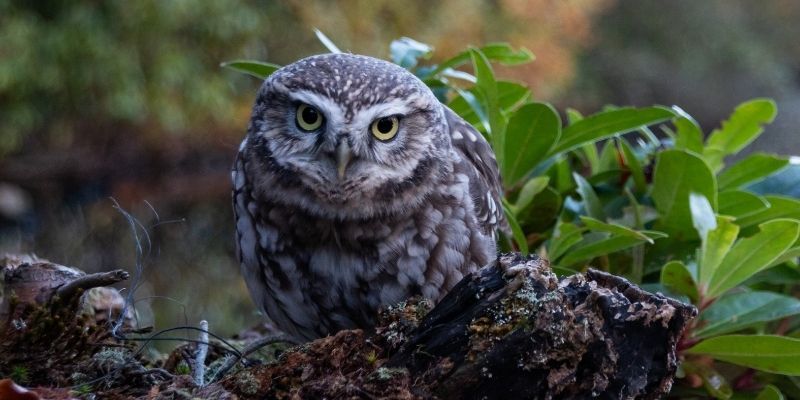Birds of prey, also known as raptors, are among the most captivating and formidable creatures in the animal kingdom. They have exceptional eyesight that enables them to spot prey from great distances, incredible agility and speed that allow them to swoop in and catch it swiftly, along with talons and beaks that are sharp enough to efficiently capture and consume their meals.
However, there’s much more to learn about these intriguing, albeit slightly fearsome, avian predators. If you’re passionate about wildlife, particularly birds of prey, there’s a wealth of fascinating facts waiting for you.
From their ancient origins to their unique adaptations and the tricks they employ to make migration easier, there’s so much to explore. If you’re eager to deepen your understanding of birds of prey identification, continue reading!
Scientists believe they are descendants of dinosaurs
Indeed, it's true! Scientists assert that today’s birds of prey are descendants of dinosaurs. This is because raptors evolved from carnivorous dinosaurs, known as theropods, that roamed the Earth around 150 million years ago.
These theropods included fierce predators such as the Velociraptor Mongoliensis, which may remind you of the one portrayed in the Jurassic Park films. Contrary to popular belief, however, researchers have discovered that these dinosaurs bore a closer resemblance to the flying raptors we see today.
Evidence suggests that these ancient hunters were feathered rather than scaled, sharing features with modern birds of prey like hawks and eagles, including the distinctive long claw on the second toe of each foot. While films depicted this claw as a weapon for slashing, it’s now believed that Velociraptors used their claws to grip and hold down prey, much like today’s predatory birds.
When the asteroid impact and volcanic eruptions that ended the age of dinosaurs took place, most of these creatures went extinct, but birds of prey survived. Thus, they are indeed direct descendants of the Jurassic period.
Learn more about everything you need to know regarding birds of prey on this insightful page.

Birds of prey have unique evolutionary traits
The evolution of birds of prey differs from that of many other animals and even other bird species. Typically, animal features evolve over time through natural selection, resulting in species that are better adapted to their environments. However, raptors have not undergone this evolutionary flexibility; instead, their skull shapes are remarkably consistent, changing only in predictable ways related to size.
Unlike other birds, where beak shapes can evolve separately from skull shapes, for birds of prey, the beak's form is closely tied to the skull. This has led to a slower evolutionary process compared to other bird species, which have diversified into numerous forms.
Their lifecycle offers insight into environmental health
The lifecycle of birds of prey is not only fascinating but also crucial for monitoring various environmental conditions.
The annual lifecycle of these raptors can be broken down into four key stages:
- Autumn migration
- Spring migration
- Summer nesting
- Wintering
Understanding how these apex predators operate during these phases is vital to comprehending their conservation status and needs. Many North American birds of prey undertake extensive migration journeys each year, traveling from as far north as Alaska to as far south as South America.
During the warmer months, they nest in northern regions to raise their young. As winter approaches, they migrate south to find more abundant food sources. This cycle continues year after year.
While migrating in autumn and spring, birds of prey can cover thousands of miles, often crossing multiple borders and habitats, leading to non-native raptors appearing in the UK at various times of the year.
Unlike many other bird species, birds of prey typically lay only 2 to 4 eggs in a nest, with a maximum of 2 likely to survive to fledging. Numerous factors can lead to nest failures, including human disturbances, food shortages, and habitat encroachment due to development.
Winter presents the greatest challenges for birds of prey, as competition for limited resources peaks. To cope, these raptors often congregate in areas rich in prey during winter, returning to these locations year after year if they prove fruitful.
Studying birds of prey is crucial for understanding environmental changes. As they are particularly vulnerable to ecological threats, raptors serve as an indicator species. Changes in their behaviour and declining populations can signal serious issues that could endanger them and other wildlife if not addressed promptly.

They employ strategies for migration
As raptors migrate, they expend significant energy and face numerous dangers. To facilitate their journeys, they have developed strategies that are passed down through generations:
During migration, birds of prey utilise:
- Thermals – Warm air rises when the sun heats the Earth's surface, allowing them to soar and gain altitude.
- Updrafts – Gusts of wind hitting mountainous regions create updrafts that birds of prey use to gain height and navigate peaks.
- Leading lines – To avoid getting lost, birds of prey follow geographical features like coastlines and ridges that guide them in their migrations.
- Obstacles – To prevent fatigue, birds of prey avoid large bodies of water, where thermals do not form as effectively.
Frequently asked questions about birds of prey
What are common birds of prey?
Common birds of prey include the red-tailed hawk, American kestrel, golden eagle, bald eagle, and barn owl.
What are the top 5 birds of prey?
The top 5 birds of prey often mentioned are the golden eagle, bald eagle, harrier hawk, red-tailed hawk, and peregrine falcon.
Which birds are classified as birds of prey?
Species classified as birds of prey through birds of prey identification include eagles, hawks, owls, and falcons.
What bird resembles a kestrel but is larger?
The bird that resembles a kestrel but is larger is the merlin.
Which is the most common bird of prey in Britain?
The most common bird of prey in Britain is the buzzard.
What about the hen harrier?
The hen harrier is a distinctive and agile bird of prey found in the UK, known for its low hunting flight and preference for open moorlands.
What is a sparrowhawk?
The sparrowhawk is a small but powerful raptor, adept at hunting smaller birds with incredible speed and agility.
What is a red kite bird?
A red kite is a striking bird of prey known for its reddish-brown feathers, forked tail, and graceful flight. Native to parts of Europe, including the UK, red kites were once endangered but have made a strong comeback thanks to conservation efforts. You'll often see a red kite bird soaring over open countryside, feeding on small mammals and carrion. Red kites play an important role in maintaining ecological balance and are a welcome sight for wildlife enthusiasts and birdwatchers alike.
What other predatory birds are there?
Other notable predatory birds include the osprey and buzzard, both of which are commonly found English birds of prey.
Discover more about birds of prey online!
The facts presented here are just the beginning of what you can learn about these majestic creatures. By enrolling in an online birds of prey course, you can further your education about both exotic and English birds of prey from the comfort of your home.
This Birds of Prey Studies Level 3 Award (RQF) offers an in-depth exploration of raptors, divided into two insightful units. Once enrolled, you will learn about the various birds of prey that inhabit the UK, their biological characteristics, and their natural habitats. You will also discover the threats they face and the protective laws and organisations established to safeguard them.
The course covers common diseases that affect both exotic and British birds of prey, along with their health, welfare needs, and nutritional requirements. Additionally, you'll learn about situations in which a bird of prey may need emergency care, the rehabilitation methods used, and the processes involved in re-releasing them into the wild.
While you'll study raptor theory online, there’s also an opportunity for hands-on experience with British birds of prey during a one-day practical session with an experienced Falconer. This session takes place in rural Herefordshire at Wye Valley Falconry, providing essential practical experience for those seeking careers related to birds of prey.
Enrol Today!
Why not take your interest in birds of prey further by enrolling in an online course dedicated to them? With learndirect, you can study at your own pace, fitting your education around your lifestyle, with the practical day arranged at your convenience!
Find out more by contacting our Course Executives at 01202 006 464, reaching out online, or clicking here to explore our online birds of prey course in detail.
If you’re ready to embark on a fulfilling career in the animal field but are unsure of the path to take, click the link to download our FREE animal course brochure below and discover the course that aligns with your aspirations.



















